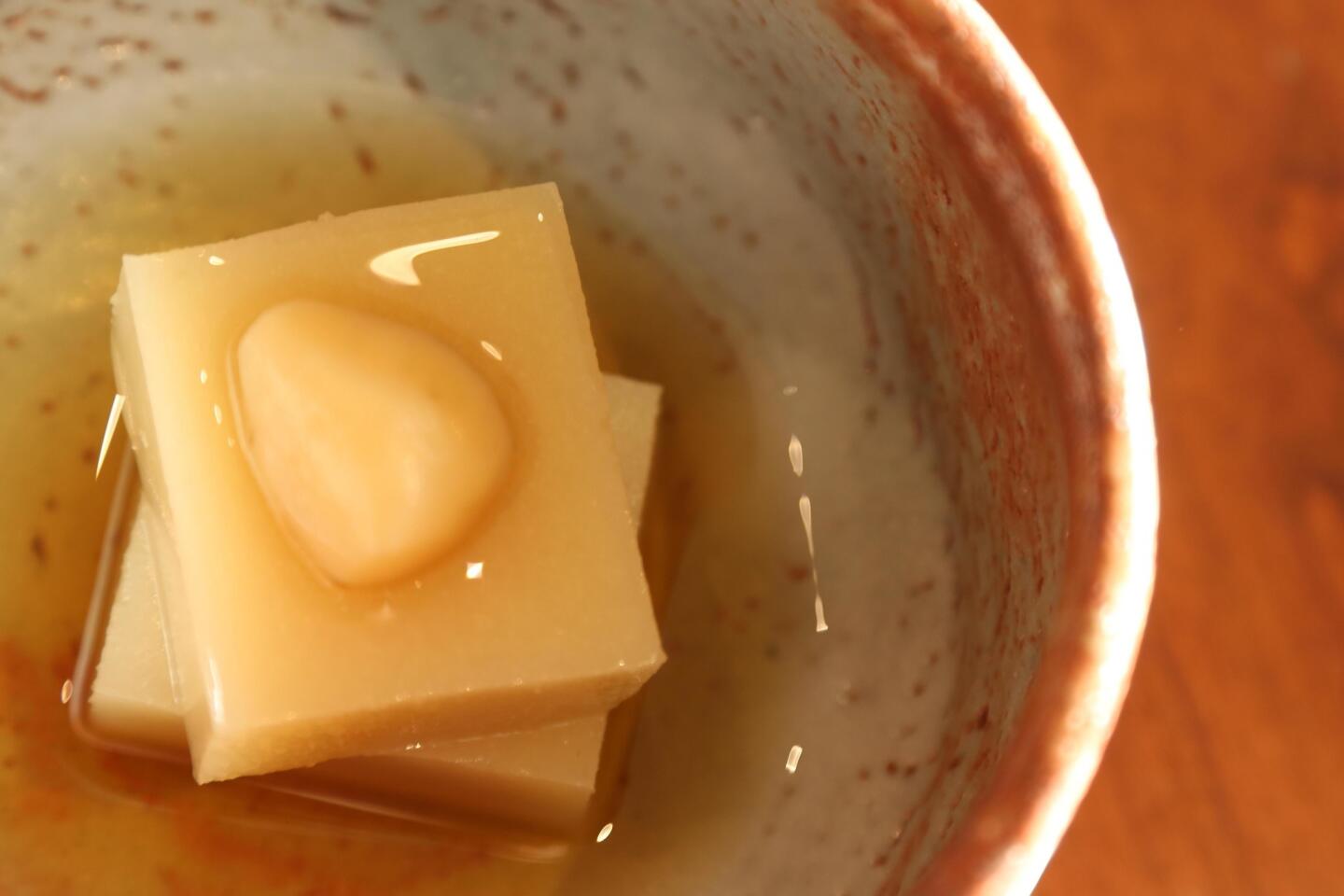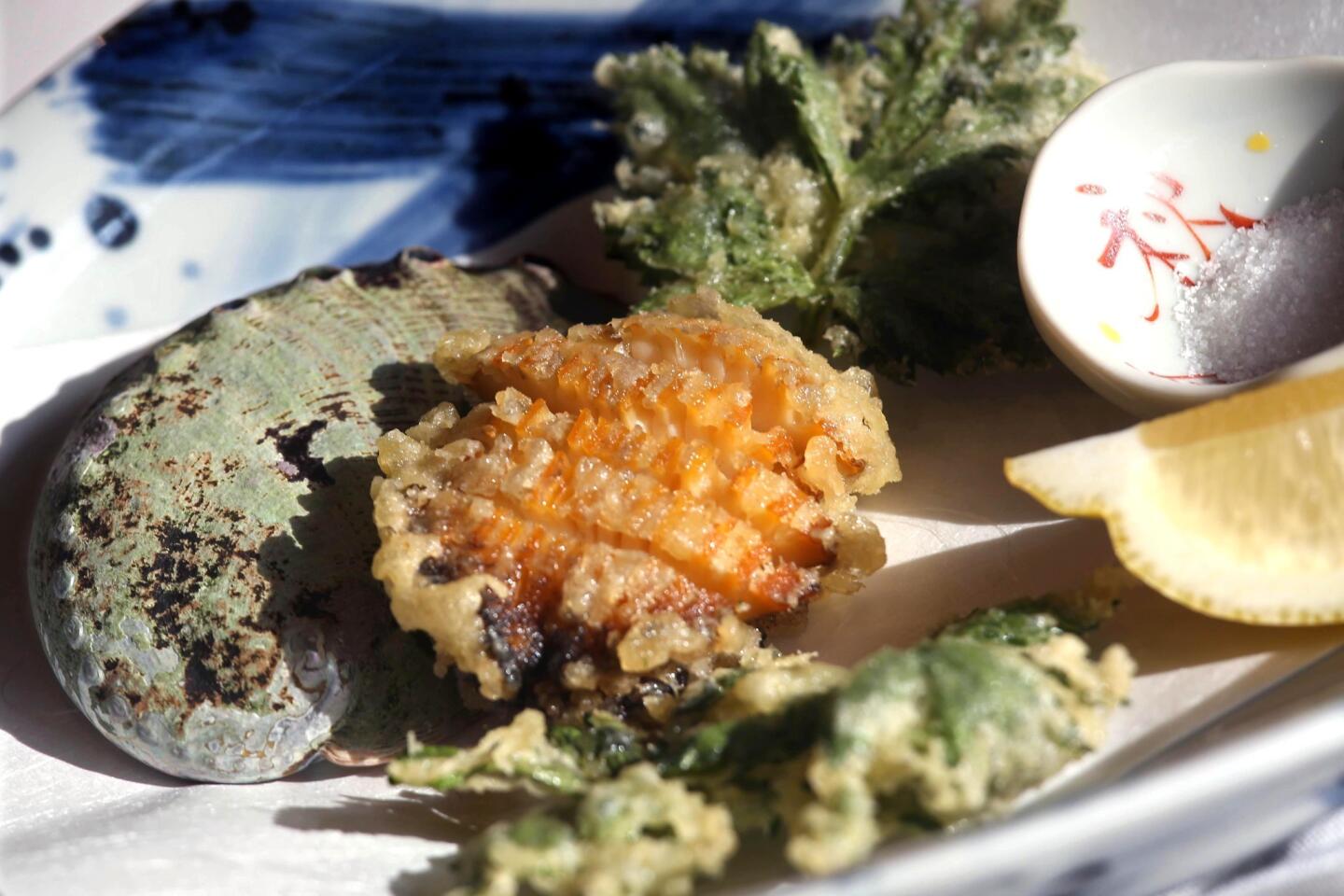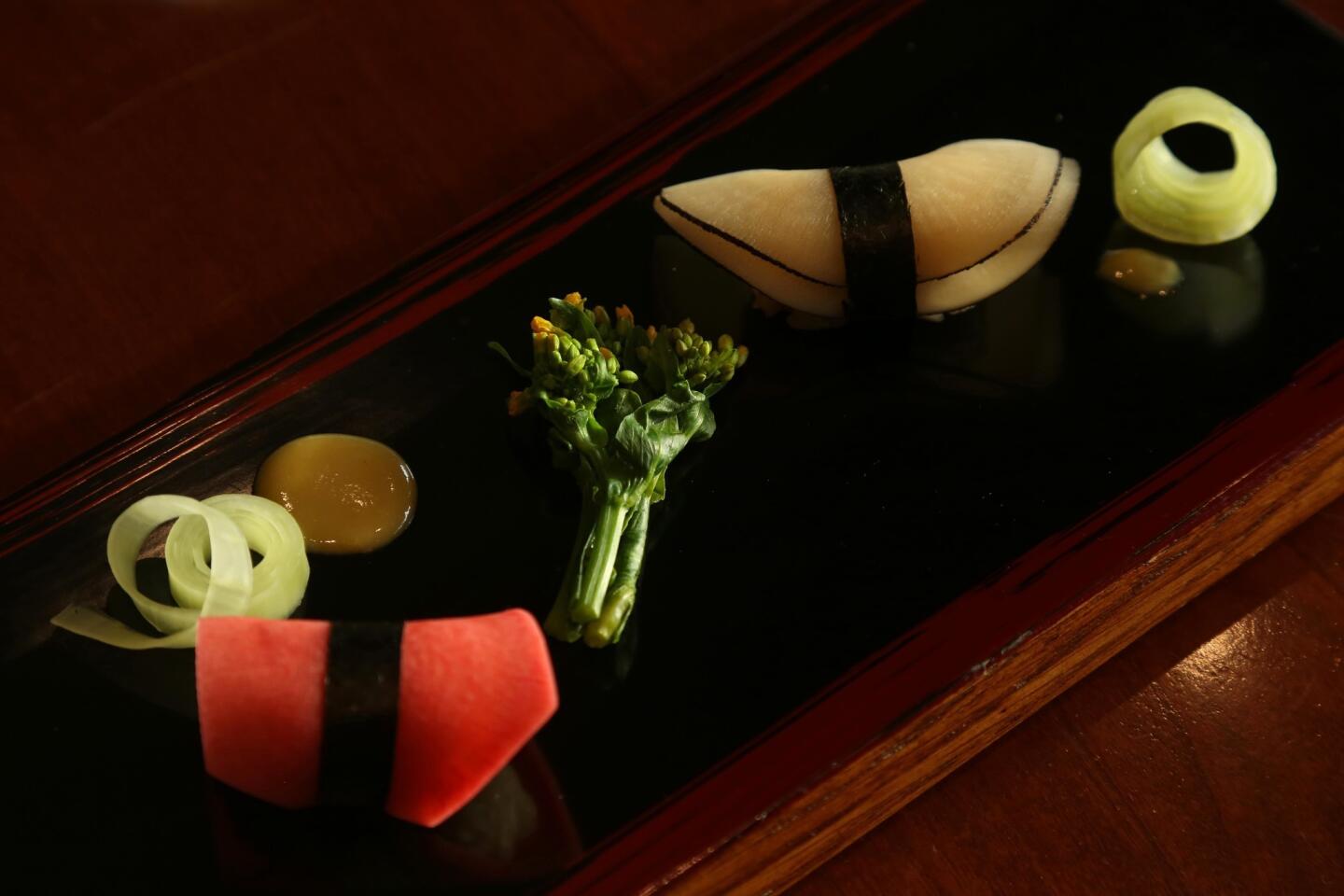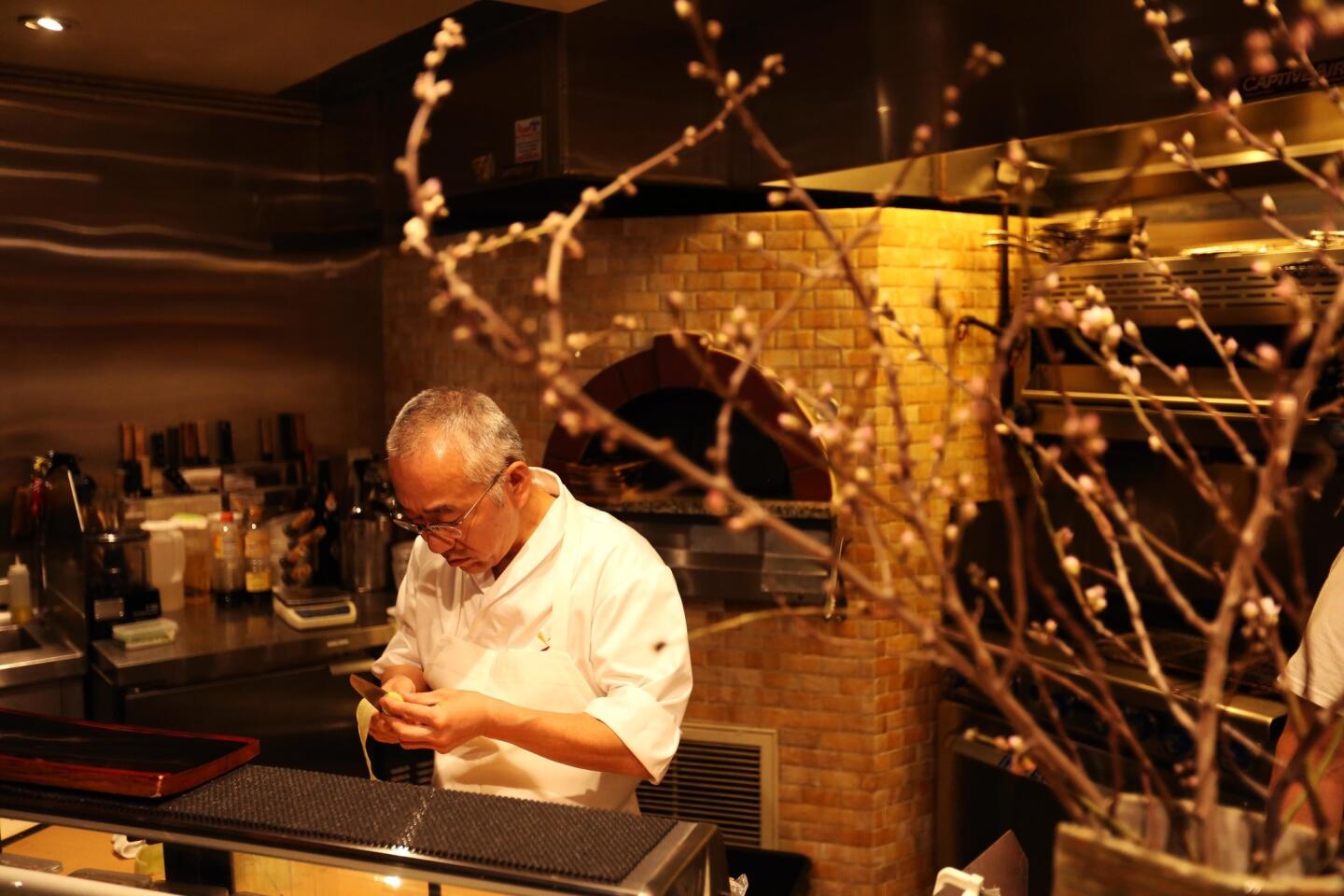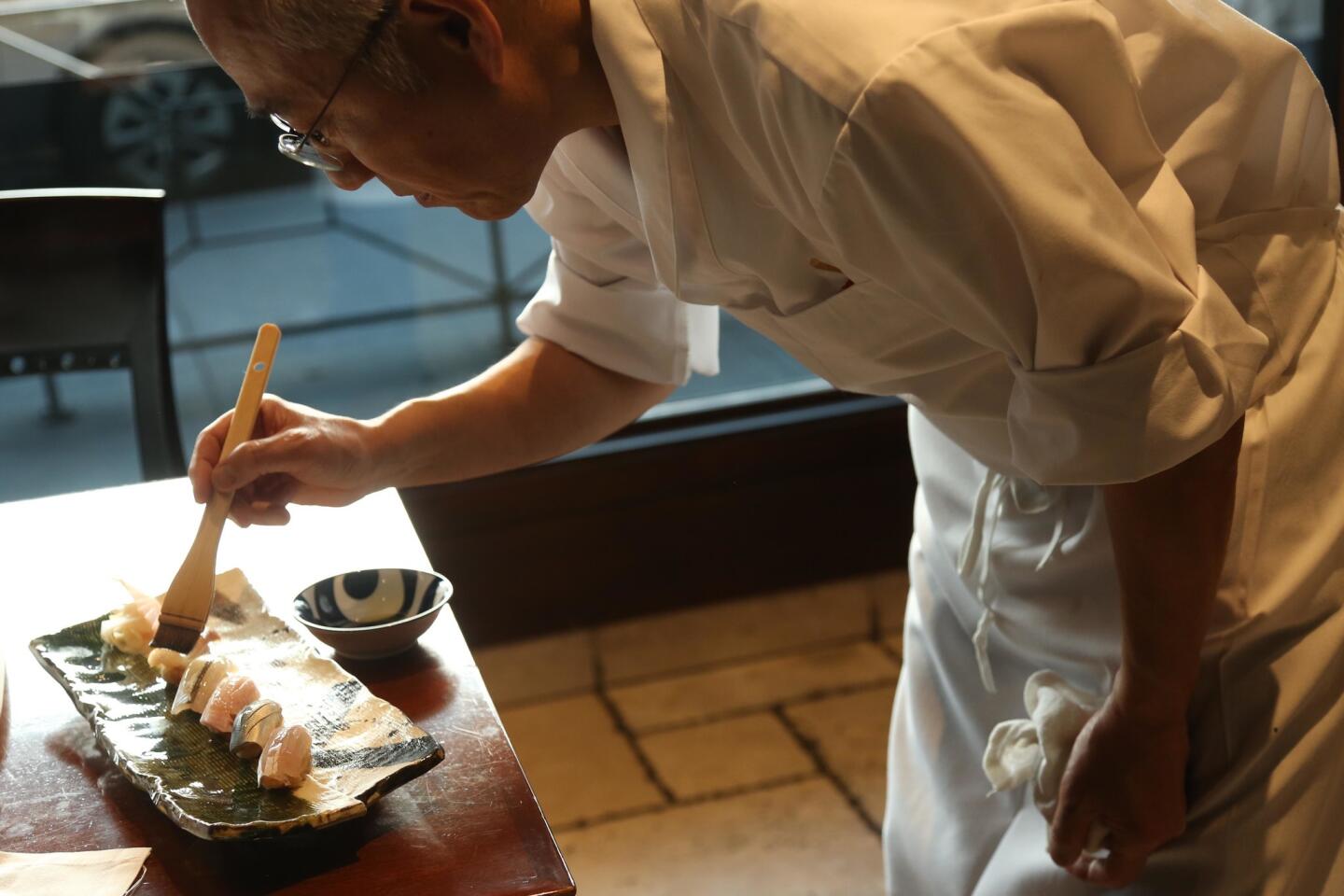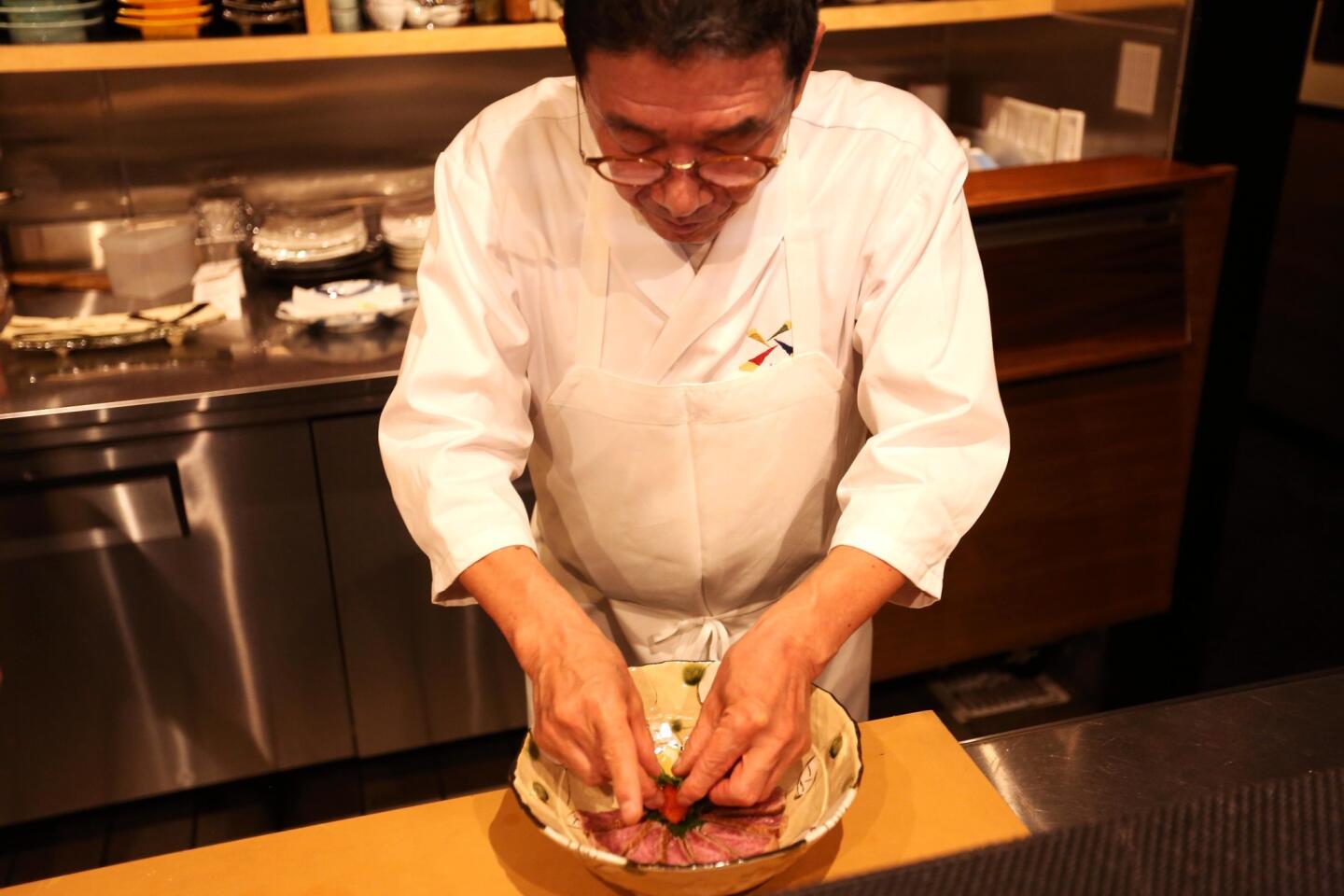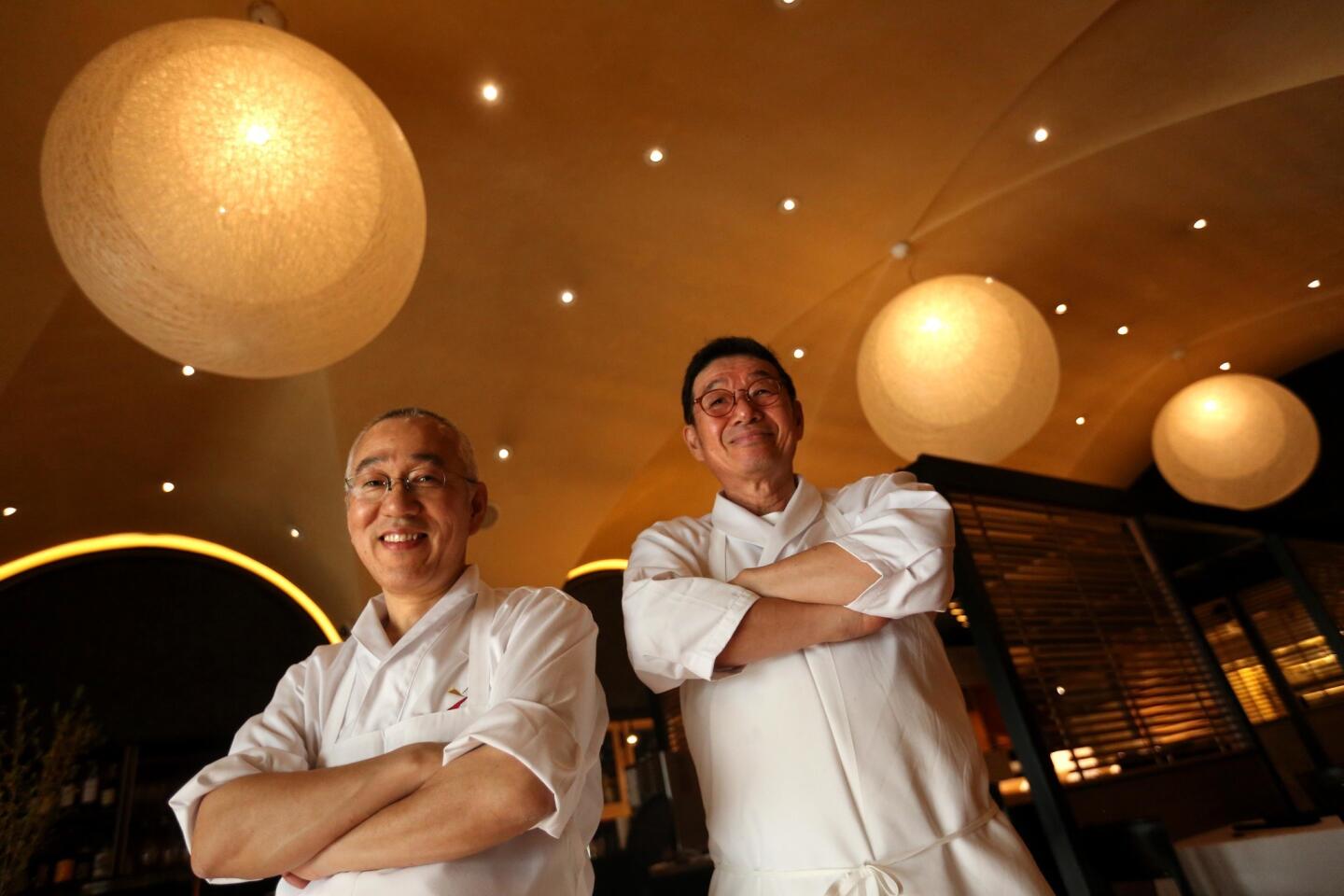Review: Jonathan Gold takes a look at the art of sushi as practiced at Shiki Beverly Hills
- Share via
Morihiro “Mori” Onodera may have the most passionate fans in the universe of Los Angeles sushi, partisans who swapped pictures of his dishes on sites like Chowhound long before Instagram existed, blissed out at his deeply slashed sayori and tended to see praise of any other sushi chef as a backhanded swipe at their hero. I have been called out over the years not for dismissing Onodera but for not praising him quite highly enough.
And when he sold his Michelin starred Mori Sushi in 2011, a gnashing of teeth rippled through the sushiverse, not because of the loss of an institution — the restaurant continued on pretty much the same — but because of the loss of his presence behind the bar, his magical way of making you think that each piece of sushi he handed you was as much an act of communication as it was of cutting fish.
He turned to pottery in his time away from the restaurant, fashioning stunning tableware you may have eaten off of at places like Providence, Capo and Mélisse, and he imported exceptionally fragrant short-grain rice from Uruguay. (I once heard Josiah Citrin talk about it with the excitement he usually reserves for Perigord truffles.) You would occasionally hear people reminisce about his snapper with house-brewed soy sauce or a brilliant juxtaposition of Hokkaido sea urchin with Santa Barbara sea urchin that illuminated the virtues of each — Onodera has not been forgotten.
How did he wind up behind the counter at Shiki, a fancy Beverly Hills restaurant opened to showcase luxury Japanese food products? I’m not sure. But for now, it may be enough that he is there, building menus around well-caught wild fish and organic farmer’s market produce. (“Farmed fish all tastes the same,” he tells a customer.) The rice and most of the seafood comes from Japan. Shiki, a specialist in washoku, traditional Japanese cuisine, is exquisitely tuned to the seasons, so that in the first weeks of spring you may find cherry blossoms pretty much anywhere, the season’s first berries and lots of pale fronds.
Mostly there is Onodera, and after the first piece he nestles onto your serving plate, a slash of Japanese sea bream on a narrow pillar of body-temperature rice, you understand: softness not quite collapsing into richness, a breath of acid, a lick of salt from the kelp in which it has been marinated, a fine, searing filament of heat that vanishes as quickly as it appears — this is what sushi devotees are looking for when they save up their nickels, a definitive experience that exists only for the brief lifetime of a sigh. Is there the barest hint of smoke? It is difficult to tell.
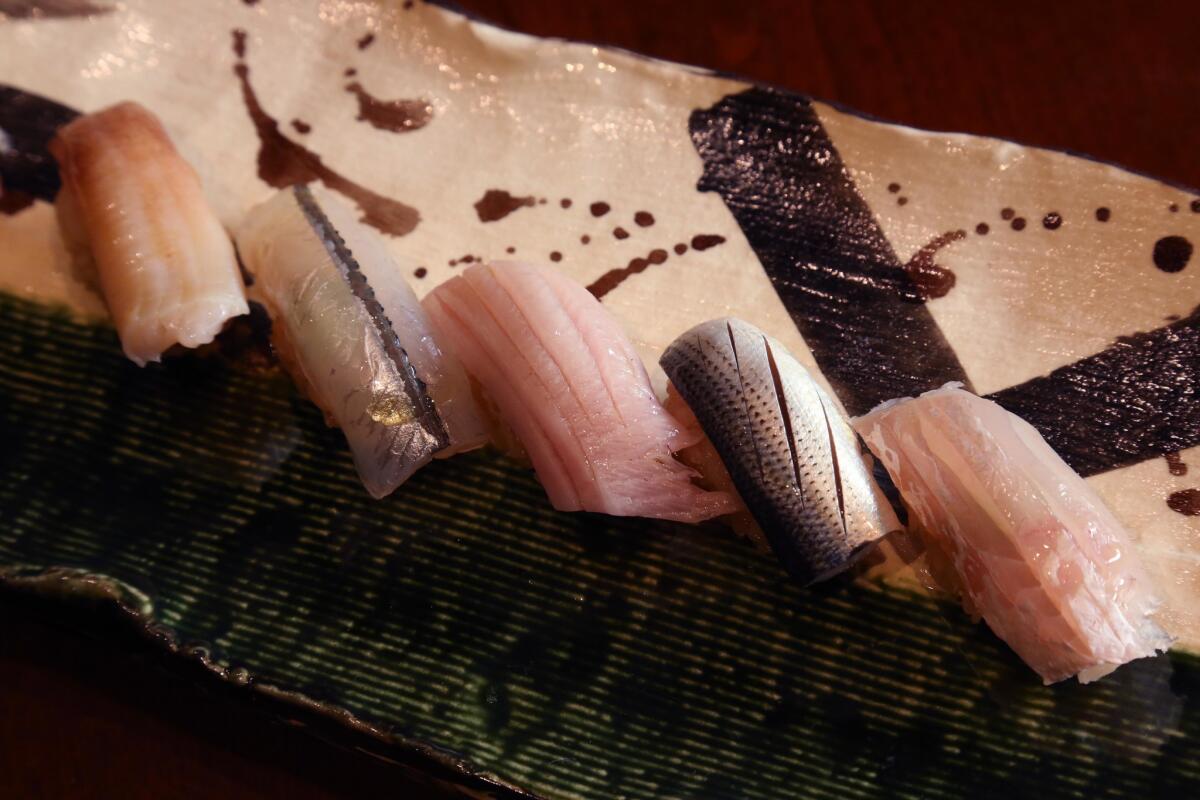
At a good sushi bar, the kind that makes you swoon, the first piece you are offered is the tell, a statement of purpose that should let you know whether you are in for an hour of bliss or an hour of sake-lubricated sadness at the happiness that might have been. At most restaurants, sushi chefs tend to begin with tuna, a fish whose pleasant beefiness is at least consistent. (Don’t order bluefin, which is both dull and plummeting toward extinction.) I am in awe of Onodera’s bream.
Before the bream, if you have ordered one of the omakase menus, there is a single cube of bean curd in a puddle of cold broth, fresh and firm, with the slightly nutty flavor of well-made tofu. Perhaps it will be topped with a pickled cherry blossom and a dab of wasabi.
Nao Sugiyama, until recently the chef of the only kaiseki restaurant in Manhattan, is also at Shiki — he worked alongside Onodera at both Matsuhisa and Katsu many years ago. And if you were ever lucky enough to visit his serene Theater District restaurant, you may recognize many of the tiny courses to follow — a kumquat suspended in a cube of clear jelly; simmered baby abalone served with a bit of its liver and an atomic-strength yuzu kosho, citrus-chile condiment; braised enoki mushrooms buried under a blizzard of smoky shaved fish. There may be tiny firefly squid with miso and batons of celtuce, a Taiwanese lettuce grown mostly for its juicy roots; or a chunk of fried tofu in broth; or sweet hijiki seaweed served in a wee, checkered container that looks like a cross between classic Japanese ceramics and something that the fries might be served in at Pop’s Chock’lit Shoppe.
Santa Barbara spot prawns split and grilled so that the oozing, lemony roe is even better than the prawn itself? Sure. Tempura — baby seabass, sea eel, spidery chrysanthemum leaves — with cherry blossom salt? Why not.
And then the sushi: that kelp-marinated bream; firm sayori, needlefish; soft, sweet Japanese buri from the yellowtail family; and glittering kohada that expertly straddles the line between fishiness and vinegar-tartness that only the best sushi chefs seem to master. Is the mackerel perhaps chewier than you might prefer, although the marinated fish almost glows with freshness? Perhaps.
There is a slice from a Hokkaido octopus tentacle, girthy as an oak tree, with the kind of striations of texture you may associate with rare prime rib; wasabi-zapped Spanish mackerel; and madai, a kind of sea bream, briefly charred over a fire before it is made into sushi. Some nights Onodera finishes with the kind of zillion-layered omelet that makes you fear for the sanity of a chef with the patience to prepare it; sometimes with a simple, Tokyo-style roll stuffed with only rice and braised squash, a dish stunning in its simplicity and deftness of execution.
Could a vegan sushi roll serve as a mic drop? In this case, definitively so.
::
Shiki Beverly Hills
A Beverly Hills Japanese restaurant reboots with two veteran chefs.
LOCATION
410 N. Canon Drive, Beverly Hills, (310) 888-0036, shikibeverlyhills.com
PRICES
Omakase $130-$190 (dinner); $40-$80 (lunch). Appetizers $3-$18; sashimi $20-$36; tempura $4-$24; yakimono $9-$28; A-5 Japanese wagyu beef $24 per ounce.
DETAILS
Lunch noon to 2:30 p.m. Tuesday through Saturday, dinner 6 to 10 p.m. Tuesday through Saturday, 5:30 to 9 p.m. Sunday. Credit cards accepted. Full bar. Valet parking.
RECOMMENDED DISHES
Sushi omakase.
More to Read
Eat your way across L.A.
Get our weekly Tasting Notes newsletter for reviews, news and more.
You may occasionally receive promotional content from the Los Angeles Times.

